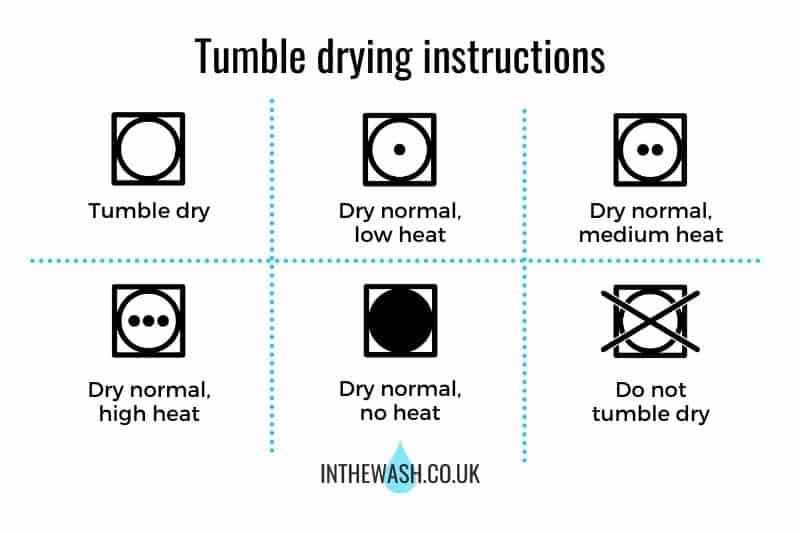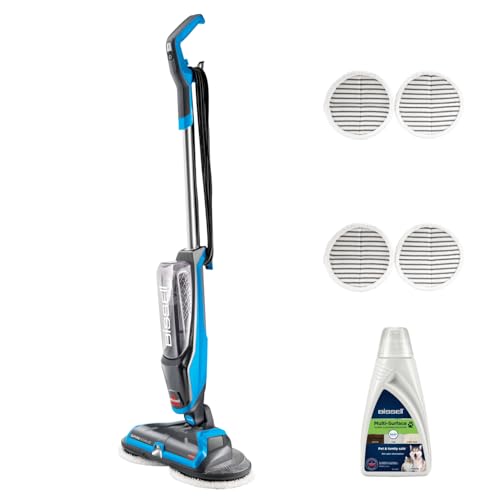




Drying delicate items can be a challenge, especially without a tumble dryer. Delicate fabrics such as silk, lace, or cashmere require special care to prevent damage or shrinkage. However, there are several alternative methods you can use to dry your delicate items safely and effectively.
1. Air-drying
One of the simplest and safest ways to dry delicate items is to air-dry them. Find a flat surface, such as a clean towel or a drying rack, and lay your item down. Gently reshape the garment if needed and leave it to dry naturally. Keep in mind that delicate items may take longer to dry compared to other fabrics, so be patient.
2. Rolling in a towel
If you need to speed up the drying process, you can try rolling your delicate items in a clean towel. Lay the item flat on a clean towel and roll it up tightly, squeezing out excess water as you go. Unroll the towel and transfer the item to a fresh, dry towel or drying rack to finish drying. This method helps to absorb moisture without putting too much stress on delicate fabrics.
3. Using a fan or air conditioning
If you need to dry your delicate items quickly, you can use a fan or air conditioning. Place the item near a fan or in a cool, air-conditioned room to help circulate air and speed up the drying process. However, avoid placing delicate items directly in front of a fan or in a high-heat environment, as this can cause damage.
4. Hanging to dry
For delicate items that are not prone to stretching or losing shape, you can hang them to dry. Use a padded hanger or wrap the ends with a soft cloth to prevent marks or creases. Hang the item in a well-ventilated area away from direct sunlight or extreme heat. Check regularly to ensure proper airflow and adjust the position if necessary.
Remember, when drying delicate items without a tumble dryer, it’s important to always read the care label and follow any specific instructions. Additionally, never wring or twist delicate fabrics to remove excess water, as this can cause damage. By using these alternative methods, you can safely dry your delicate items and prolong their lifespan.
Disclaimer: The information provided in this article is for informational purposes only. [Your Website Name] is not responsible for any damages or injuries that may occur from following these tips. Please consult a professional or refer to the garment’s care label for specific drying instructions.
Why Avoid Using a Tumble Dryer for Delicate Items

Drying delicate items can be a challenge, especially when it comes to using a tumble dryer. While a tumble dryer might seem like a convenient and quick way to dry your clothes, it can actually cause damage to delicate fabrics and items. Here are a few reasons why you should avoid using a tumble dryer for delicate items:
- Heat damage: Tumble dryers generate a lot of heat, which can be too harsh for delicate fabrics like silk, lace, or wool. The high temperatures can cause shrinkage, distortion, or even melting of the fabric, ruining your delicate items.
- Fabric wear and tear: The tumbling action of a dryer can cause friction between the delicate fabrics, leading to excessive wear and tear. This can result in fabrics becoming thinner, developing holes or tears, and losing their original shape.
- Color fading: The heat and agitation in a tumble dryer can cause the colors of delicate garments to fade or become dull over time. This is especially true for vibrant or dark-colored items, which are more susceptible to color fading.
- Loss of embellishments: Delicate items often have delicate embellishments like beads, sequins, or embroidery. The heat and tumbling action of a dryer can cause these embellishments to become loose or fall off completely, ruining the aesthetic appeal of the item.
- Shrinkage: Many delicate fabrics have a high tendency to shrink when exposed to heat. Using a tumble dryer can cause these fabrics to shrink, leading to garments that no longer fit properly.
- Loss of elasticity: Delicate fabrics like spandex or elastic can lose their elasticity and become stretched out when exposed to high temperatures. This can result in garments losing their shape and becoming baggy or ill-fitting.
If you want to ensure the longevity and quality of your delicate items, it’s best to avoid using a tumble dryer. Instead, opt for more gentle and safe drying methods like air drying or using a specialized fabric rack or hanger.
Tips for Air Drying Delicate Clothes

Air drying delicate clothes can help to preserve their quality and prevent damage. Here are some tips for air drying delicate clothes without a tumble dryer:
1. Use a Drying Rack
Invest in a drying rack for air drying delicate clothes. This will provide a flat surface for clothes to lie on, reducing the risk of stretching or misshaping.
2. Sort Clothes by Fabric
Sort your delicate clothes into groups by fabric type. This will help you to determine the appropriate drying time and method for each item.
3. Gently Squeeze Out Excess Water
Before laying your delicate clothes on the drying rack, gently squeeze out any excess water. Avoid wringing or twisting the clothes, as this can damage the fibers.
4. Shape Clothes Appropriately

While the clothes are still damp, shape them appropriately. Use your hands to reshape the item to its original size and form. This will help avoid any wrinkles or misshaping during the drying process.
5. Hang Delicate Items
If delicate clothes have straps or should be hung, use a padded hanger or clothespins to avoid leaving marks or indentations on the fabric.
6. Avoid Direct Sunlight

Avoid drying delicate clothes in direct sunlight, as this can cause fading or discoloration. Choose a well-ventilated area indoors or shade outside for air drying.
7. Check Care Labels

Always check the care labels on your delicate clothes for specific air drying instructions. Some fabrics may require special handling or temperature conditions.
8. Patience is Key
Air drying delicate clothes may take longer than using a tumble dryer. Be patient and allow enough time for the clothes to fully dry before wearing or storing them.
9. Iron or Steam
If necessary, iron or steam your air-dried delicate clothes to remove any wrinkles or creases. Use a low heat setting and place a cloth between the iron and the fabric to protect it.
Following these tips will help you to safely air dry your delicate clothes without a tumble dryer, keeping them in good condition for longer.
How to Hang Delicate Items for Drying

When it comes to drying delicate items, such as silk, lace, or sequined clothing, it’s important to be extra careful to avoid any damage. Instead of using a tumble dryer, which can be too rough on these delicate fabrics, hanging them to dry is a safer option. Here’s a step-by-step guide on how to hang delicate items for drying:
- Choose a suitable location: Find a well-ventilated area where you can hang your delicate items. Avoid direct sunlight, as it can fade or damage certain fabrics.
- Prepare your hangers: Select hangers that are suitable for the specific delicate items you want to dry. Padded or velvet hangers can help prevent any snags or marks on the fabric.
- Gently remove excess water: Before hanging your delicate items, gently squeeze out any excess water. Be cautious not to wring or twist the fabric, as it can cause stretching or distortion.
- Hang tops and dresses: For tops and dresses, use hangers with straps to prevent stretching. Hang them by the shoulders or sleeves to maintain their shape. If needed, gently reshape the neckline or any stretched areas while the item is still wet.
- Hang bottoms: For pants, skirts, or shorts, use hangers with clips. Hang them by the waistband or clips if the fabric is delicate or prone to stretching.
- Hang fragile items flat: If you have delicate sweaters or lingerie, it’s best to lay them flat on a clean, dry surface. Use a white towel or sweater drying rack to gently shape the item to its original form.
- Allow ample space: Make sure to leave enough space between the hanging items to allow for proper air circulation. This will help speed up the drying process and prevent any musty odors.
- Check periodically: Check on your delicate items periodically to ensure they are drying evenly and without any signs of damage. If any fabric is still damp, allow it more time to dry before storing.
By following these steps, you can safely dry your delicate items without the need for a tumble dryer. Remember to always check the care instructions on your clothing labels for any specific drying recommendations.
Using a Drying Rack for Delicate Fabrics

Drying delicate fabrics can be a challenge, especially if you don’t have a tumble dryer. However, using a drying rack can help you safely dry your delicate items without causing any damage. Follow these steps to effectively dry your delicate fabrics using a drying rack:
- Choose a suitable drying rack: Look for a drying rack that is specifically designed for delicate fabrics. These racks usually have a flat surface with mesh or bars to allow air circulation.
- Prepare the drying area: Find a clean and well-ventilated area to set up your drying rack. Make sure there is enough space for the items to hang without touching each other.
- Sort the items: Separate your delicate fabrics into similar types, such as shirts, dresses, or lingerie. This will make it easier to organize and hang them on the drying rack.
- Gently remove excess water: Before hanging the items, gently squeeze out any excess water. Avoid wringing or twisting the fabrics, as this can cause stretching or damage.
- Hang the items: Carefully place each item on the drying rack, making sure they are arranged in a way that allows air to circulate between them. For shirts and tops, drape them over the bars or place them flat on the rack. For skirts and dresses, use clothespins or hangers to hang them.
- Allow proper air circulation: Ensure that there is enough space between the items to allow air to circulate freely. This will help speed up the drying process and prevent any musty odors.
- Flip and rotate: To ensure even drying, periodically flip and rotate the items on the drying rack. This will help prevent wrinkles and ensure that all sides are exposed to air.
- Patience is key: Delicate fabrics may take longer to dry compared to other materials. Be patient and allow sufficient time for the items to fully dry before removing them from the drying rack.
- Check for dryness: Before removing the fabrics from the drying rack, double-check if they are fully dry. Feel the fabric to ensure there is no dampness or coolness, which could indicate remaining moisture.
Using a drying rack for delicate fabrics is a safe and effective way to dry them without the use of a tumble dryer. By following these steps, you can ensure that your delicate items remain in good condition and last longer.
Other Alternatives to Tumble Drying Delicate Items

Air Drying
Air drying is one of the safest and most effective alternatives to tumble drying delicate items. Here are the steps to air dry your delicate items:
- First, gently squeeze out any excess water from the item.
- Next, lay a clean, absorbent towel on a flat surface and place the delicate item on top.
- Gently reshape the item if necessary and leave it to air dry.
- Avoid direct sunlight as it can cause fading or damage to the delicate fabric.
Hang Drying
If air drying is not an option or if you need to dry your delicate item quickly, you can try hang drying. Here’s how:
- Choose a well-ventilated area to hang your delicate item.
- Use a hanger or a drying rack to hang the item.
- Make sure to reshape the item to prevent any distortions.
- Avoid using pegs or clips that can leave marks on the fabric.
Rolling in a Towel
Rolling delicate items in a towel helps absorb excess moisture and speeds up the drying process. Here’s how:
- Gently press the delicate item between two clean, dry towels to remove excess water. Do not rub or wring.
- Place the wet item on a dry towel and roll it up. Apply gentle pressure to encourage the towel to absorb the moisture.
- Unroll the towel and check the item’s dampness. If it’s still wet, repeat the process with a different dry towel.
Using a Fan
If you need to speed up the air drying process, you can use a fan. Here’s how:
- Place the delicate item on a clean, dry surface.
- Position a fan at a safe distance from the item, ensuring that it is not too close to avoid damage.
- Turn on the fan to create airflow that will aid in drying the item.
- Periodically check the item’s dryness and adjust the fan’s positioning if necessary.
Using a Dehumidifier
If you live in a humid environment, using a dehumidifier can help extract moisture from the air and speed up the drying process. Here’s how:
- Place the delicate item on a clean, dry surface.
- Position a dehumidifier nearby, ensuring that it is set to the appropriate humidity level.
- Allow the dehumidifier to extract moisture from the air, aiding in the drying process.
- Regularly check the item’s dryness and adjust the dehumidifier’s settings if necessary.
| Drying Method | Advantages | Disadvantages |
|---|---|---|
| Air Drying | Gentle on delicate fabrics, no additional equipment required | Takes longer to dry |
| Hang Drying | Quicker than air drying, allows for better airflow | May cause stretching or distortion if not done carefully |
| Rolling in a Towel | Speeds up drying process, helps absorb excess moisture | Requires multiple dry towels for larger items |
| Using a Fan | Accelerates drying process, good for small items | Not suitable for delicate fabrics that may be damaged by air movement |
| Using a Dehumidifier | Effective in humid environments, speeds up drying | Requires a dehumidifier and access to electricity |
Choose the drying method that works best for your delicate item based on the fabric type, time available, and equipment you have on hand. Always follow the manufacturer’s care instructions for the best results.
FAQ
Can I dry delicate items without a tumble dryer?
Yes, you can definitely dry delicate items without a tumble dryer. There are alternative methods that can be used to safely dry delicate clothing and other items.
What are some alternative methods to dry delicate items?
Some alternative methods to dry delicate items include air drying, using a drying rack, or hanging the items up to dry. These methods are gentle on delicate fabrics and help prevent damage.
How long does it take to air dry delicate items?
The time it takes to air dry delicate items can vary depending on the humidity levels and the thickness of the fabric. On average, delicate items can take anywhere from a few hours to a full day to completely air dry.
What precautions should I take when air drying delicate items?
When air drying delicate items, it’s important to avoid direct sunlight, as it can cause fading or damage to the fabric. Additionally, ensure that the items are not touching each other to prevent any potential color transfer or wrinkling.
Can I speed up the drying process for delicate items?
Yes, you can speed up the drying process for delicate items by using a fan or placing them near a well-ventilated area. Just be sure to check the care instructions for the specific item to ensure that heat or excessive airflow won’t cause any damage.
Can I dry delicate items without a tumble dryer?
Yes, you can dry delicate items without a tumble dryer. There are several alternative methods that you can use to safely dry your delicate items.
What are some alternative methods for drying delicate items?
There are several alternative methods for drying delicate items. One option is to air dry them by laying them flat on a clean, dry towel or hanging them on a clothesline. Another option is to use a drying rack or a clothes drying hanger to hang the delicate items. You can also use a fan or a hairdryer on a cool setting to gently speed up the drying process.












